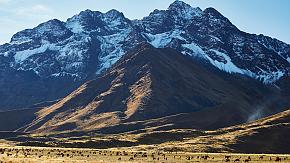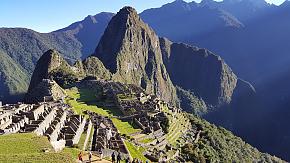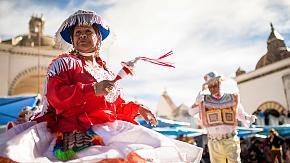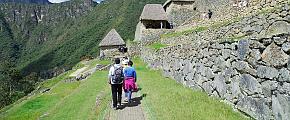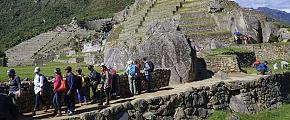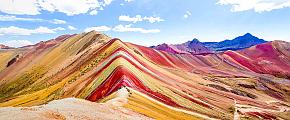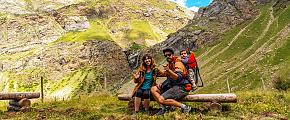How to Avoid Altitude Sickness in Peru
Peru, known as the land of the Incas, is on the bucket list of many travelers. One thing you may worry about is the risk of altitude sickness, a temporary illness that occurs when you quickly from a low elevation to a high elevation. However, most people experience no symptoms or very mild. There are many effective ways to prevent or reduce its impact, allowing you to fully enjoy your Peru Tour.
What Is Altitude Sickness
Altitude sickness, also called soroche in Peru, which is similar to a bad hangover, normally occurs at altitudes of 8,200 feet / 2,500 meters and above. It is basically caused by the low level of oxygen, with the risk increasing as the altitude rises and ascent quickens. As you go higher, the air becomes thinner, resulting in less oxygen and your body needs to function well. Therefore, it's advisable to ascend slowly to give your body ample time to adapt.
What Are Altitude Sickness Symptoms
Being able to identify the symptoms of altitude sickness helps you seek treatment early before they become more serious. Common symptoms include shortness of breath, headache, dizziness, nausea, vomiting, fatigue, loss of appetite, and sleeplessness. These symptoms often do not develop immediately when you arrive at high altitude, but occur between the first 4 to 36 hours. Given the time to rest, they usually subside within 6 to 48 hours. If symptoms last over 24 hours, the best bet is to descend to lower locations and see a doctor.
Is Peru Altitude Sickness Common Among Travelers
Altitude sickness can happen to all, regardless of fitness, age, and gender. You may assume that athletes are physically fit enough to avoid altitude sickness. Actually, fit people need more oxygen than others, so they can more easily get altitude sickness. Additionally, people with certain medical conditions are susceptible to it, including heart conditions, lung conditions, diabetes, asthma, chronic obstructive pulmonary disease, epilepsy, sickle cell disease, and pregnancy. It's recommended to seek advice from your doctor before traveling to high-elevation destinations.
What Are the High Altitude Destinations in Peru
You may experience altitude sickness if you go to high-elevation zones, rather than lower-elevation destinations such as the Amazon rainforests and coastal areas. If you are worried about it, check out some of the most popular high-altitude Peruvian destinations before you go. The following destinations are for your reference.
- Machu Picchu: 7,972 feet (2,430 meters)
- Cusco: 11,152 feet (3,399 meters)
- Inca Trail: 13,800 feet (4,200 meters)
- Lake Titicaca: 12,507 feet (3,812 meters)
- Puno: 12,556 feet (3,830 meters)
- Ollantaytambo: 9,160 feet (2,792 meters)
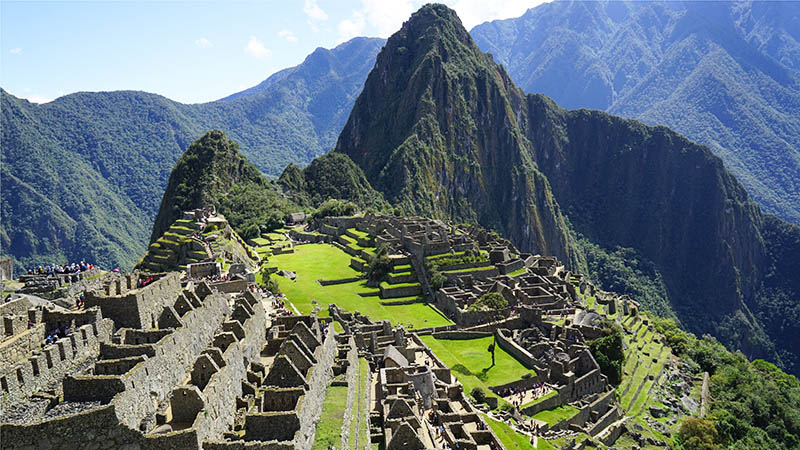 Machu Picchu in Peru
Machu Picchu in Peru
Pure Altitude Sickness Prevention
1. Slow Ascension and Flexible Itinerary
Slow ascent is the key to acclimatization. It's recommended to avoid ascending more than 1,300 feet/400 meters a day, according to the UK's National Health Service. So you'd better have an itinerary to go up slowly over the course of a few days.
Besides building one or two extra days into your schedule, the flexible itinerary gives your body time to relax and adjust to each higher elevation. For instance, if you plan to hike the Inca Trail (13,800 feet /4,200 meters), whose elevation is higher than Cusco (11,152 feet /3,399 meters), plan a two or three-day stay in Cusco first. Have a good rest in your hotel or simply take a leisurely walk to explore some of Cusco's streets for the first 24 hours. Our South American travel specialists can help you customize a flexible Peru trip that suits your pace and allows you to take the time to acclimatize. If you're still confused, feel free to contact Odynovo!
2. Talk to Your Doctor
Tell your doctor that you'll be traveling to a high altitude and ask what medicine to take to reduce the impacts of altitude sickness. Below are some of the medicines your doctor may prescribe.
Acetazolamide (also known as Diamox, with the effect of increasing acclimatization rates) to prevent and reduce the symptoms of altitude sickness, which should be taken 1 to 2 days before you start to climb.
Promethazine, an anti-sickness medication, is used for vomiting and nausea.
Paracetamol and ibuprofen to treat headaches.
These medicines can be bought in your home country or in Peru and should be taken with the advice of your doctor.
3. Buy Travel Insurance
Before you depart for your vacation in Peru, it's advisable to buy travel insurance that covers you for unforeseen events, including trip cancellation, baggage loss/damage, flight delay/cancellation, and altitude sickness.
4. Pick a Good Hotel
A hotel with good facilities and service offers you a comfortable and relaxing environment to adjust to the elevation. Many 4 or 5-star hotels in Cusco, Puno, and Lake Titicaca have oxygen available, which can be used when needed. It's recommended to contact Odynovo or ask the relevant staff so that you can get the best travel experience.
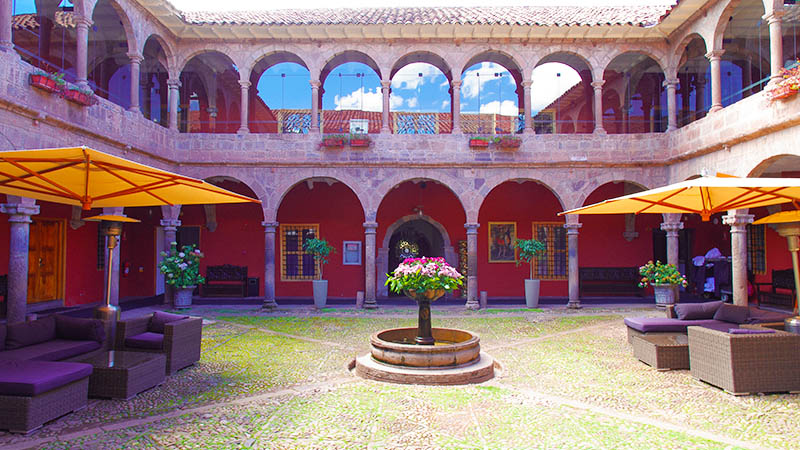 Hotel in Cusco
Hotel in Cusco
5. Avoid Alcohol and Drink More Water
Refrain from drinking any alcohol during the first several days of your arrival at high-altitude destinations in Peru, such as Cusco, because alcohol worsens the symptoms of altitude sickness.
In addition, it's important to stay hydrated. The Wilderness Medical Society says that the human body loses water through respiration at high altitudes twice as quickly as at sea level. You need to drink more water at high elevations (e.g, Cusco, Machu Picchu, Lake Titicaca) than you would normally drink at lower levels (e.g, Lima) to prevent dehydration, whose symptoms are similar to those of altitude sickness, such as dizziness, sleepiness, and lack of energy.
How much water should you drink? The Institute of Altitude Medicine (IAM) recommends an extra 1 to 1.5 liters of water per day at high altitudes, for a total of 3 to 4 liters. You can check your urine to see if you are well-hydrated or not. If it is mostly clear rather than dark yellow or orange, that means you have drunk the right amount of water and can maintain this drinking habit.
6. Carry an Oxishot
Oxishot, a small portable plastic can filled with concentrated oxygen, is easy to carry and sold at a reasonable price everywhere, like Cusco and Machu Picchu. When hiking or climbing on the plateau, your body needs more oxygen. Carrying oxishot can maintain your strength, reduce fatigue, replenish oxygen when you feel unwell, and relieve the symptoms of altitude sickness.
7. Try the Local Remedy - Coca
Coca is a natural remedy for altitude sickness in Peru, which the local people have used to alleviate the symptoms for thousands of years. Coca contains calcium, iron, vitamins A, B1, and B2. You can chew the coca leaves if you don't mind their bitterness, or you can drink the coca tea. Though it is made from the plant from which cocaine is made, the effect of coca tea is much milder than that of cocaine, hence it's safe to drink. It should be used in moderation, and two cups of coca tea a day would be fine. Since it is a stimulant, avoid drinking it in the evenings as it might keep you awake.
You can easily find Coca tea and coca products such as coca candies throughout the country, and nearly every hotel has coca tea for its guests. Note that while coca tea is legal in Peru, it is illegal in most countries outside South America, including the United States (where it is only legal when decocainized) and the UK. So do not bring it home.
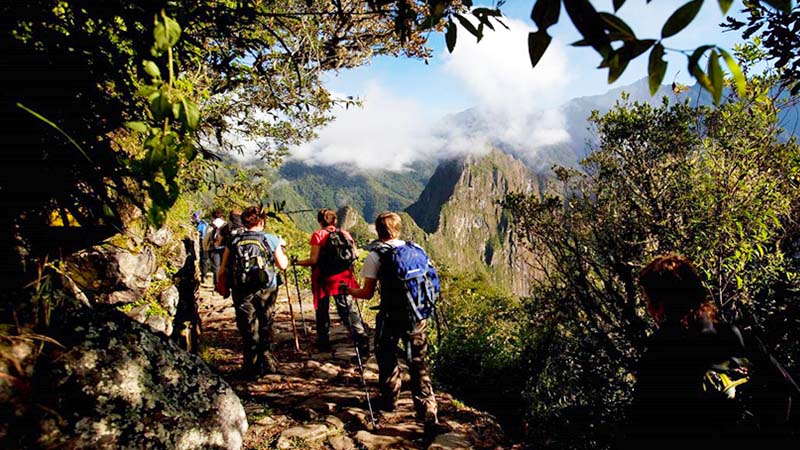 Peru Hike
Peru Hike
Pure Altitude Sickness Treatment
1. If the symptoms are very mild, you may continue ascending but at a much slower pace. It's important to let others know whenever you feel any hint of altitude sickness, even the slightest, so that they can offer you help when necessary.
2. For moderate symptoms, go down to a lower elevation by at least 1,000 feet/300 meters and stay there for a couple of days. After you become acclimatized, you can start ascending again. If descending isn't an option, stay where you are. Avoid doing exercise or going up any higher for at least 24 to 48 hours until you are fully recovered.
3. If the symptoms are severe, go to the nearest hospital for medical treatment, and take medications with the advice of your doctor (like acetazolamide to reduce the symptoms of altitude sickness, and ibuprofen or paracetamol to relieve headaches). Your doctor may advise you to descend to an elevation lower than 4,000 feet/1200 meters, depending on your physical condition.
Plan Your Peru Tour With Odynovo
Peru is a remarkable destination worth exploring at least once in a lifetime. Don't let altitude sickness hold you back. There are so many ways to avoid it, and most symptoms are mild and will subside in a day or two with proper rest and relaxation.
So if you want to visit this amazing country, now is the time to plan your trip. As a private tour operator with 10+ years of experience, Odynovo can help you create a tailor-made Peru journey with 24/7 care to make sure your trip is safe and enjoyable. Contact us now or write to [email protected]!
Related Posts You May Like
What Our Clients Say
Explore the latest verified reviews of Odynovo's travel services on Tripadvisor, Google, Trustpilot, Product Review and more trusted platforms.

